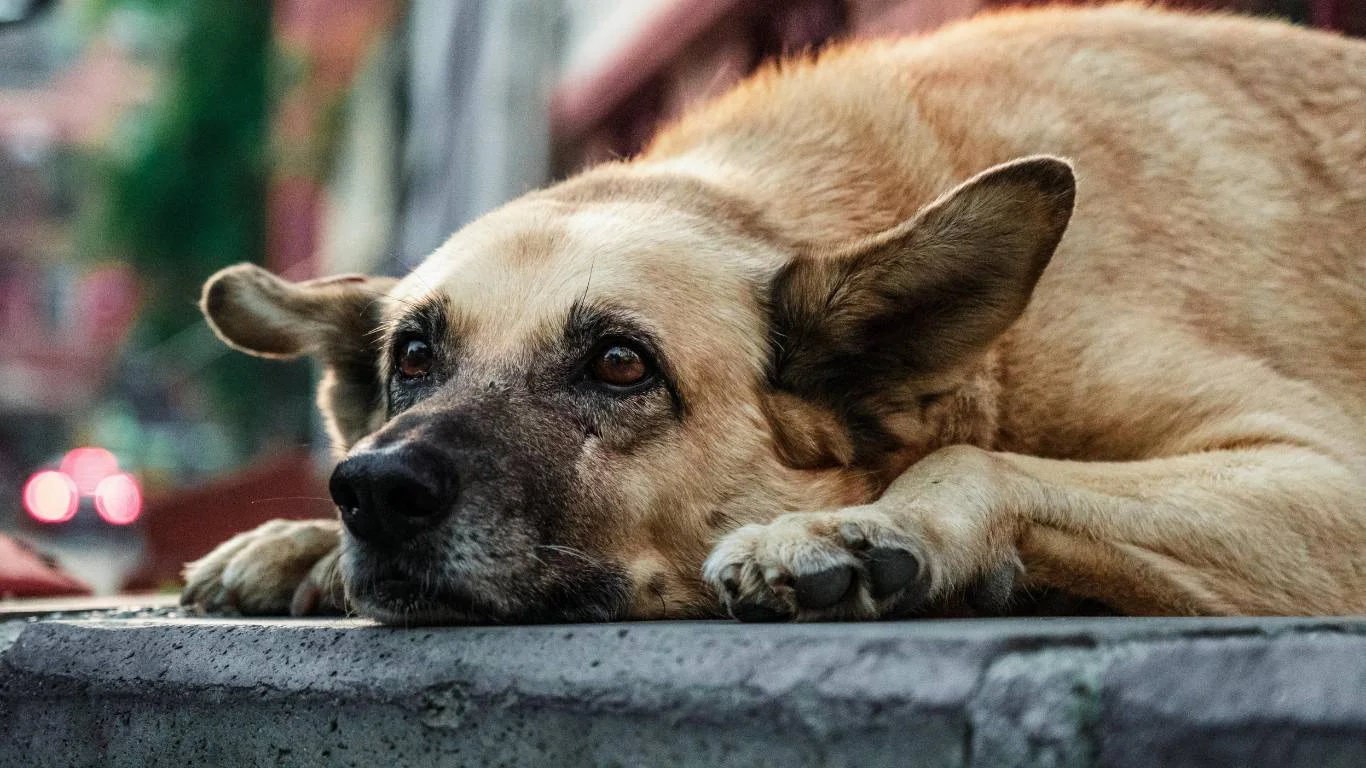How to Help a Dog with Night Terrors: Proven Tips for Peaceful Sleep
If you’ve ever been woken up in the middle of the night by your dog whimpering, twitching, or even letting out a startled bark, you’re definitely not alone. As someone who’s worked hands-on as a Veterinary Assistant with a strong focus on pet nutrition and behavior, I’ve seen just how common and distressing night terrors can be for dogs—and their humans. Knowing how to help a dog with night terrors isn’t just about comfort; it’s about supporting their physical and emotional well-being, too. Let’s break this down in a practical, real-world way—no fluff, just solid guidance from experience and research combined.
What Are Night Terrors in Dogs, Really?

Before we can help, we’ve gotta understand what we’re actually dealing with. Night terrors in dogs can look a lot like a bad dream, but they’re often more intense and can include symptoms like:
- Sudden jerking or twitching
- Heavy panting or whimpering in sleep
- Barking, growling, or crying out without waking up
- Waking in a panic—confused, disoriented, even aggressive
In my clinic days, I had a senior Golden Retriever patient named Duke who would frequently bolt upright in the middle of the night, completely startled and out of sorts. It wasn’t until we ruled out seizures and other neurological issues that we landed on parasomnias—specifically, night terrors.
Is It a Seizure or a Night Terror?
This is one of the trickiest parts. If your pup is flailing around or acting disoriented after waking up, it can be tough to tell the difference between a seizure and a nightmare episode. Here are a few key ways to distinguish them:
- Awareness After Waking: Dogs coming out of a nightmare are usually quickly alert, even if a bit shaken. After a seizure, they may stay disoriented longer.
- Movement Pattern: Seizures are often more rigid or involve paddling movements. Night terrors are more twitchy and spontaneous.
- Frequency: Seizures tend to happen at any time, while night terrors occur mostly during sleep.
Of course, always check with your vet—especially if it’s a new behavior or if you’re unsure. When in doubt, rule the medical stuff out first.
Why Do Dogs Get Night Terrors?

Night terrors don’t just happen randomly. There’s usually an underlying reason. Based on what I’ve seen in practice and what’s backed up by the experts, here are some common causes:
1. Past Trauma or Anxiety
This is a biggie. Dogs who’ve been through abuse, neglect, abandonment, or even major transitions (like moving homes or losing a companion) are way more likely to have night terrors. One of our rescue patients, a little terrier mix named Piper, would cry in her sleep for months after being adopted. As she settled into her new home, the night terrors slowly eased up.
2. Sensory Overload During the Day
Ever had one of those days that was just too much? Dogs feel that too. Loud environments, changes in routine, unfamiliar faces, or even overexcitement can all lead to restless sleep—and bad dreams. Think of it as their brain trying to “unpack” all the chaos of the day.
3. Poor Sleep Hygiene (Yep, It’s a Thing)
I know it sounds a little silly, but dogs benefit from a consistent, calming nighttime routine just like people do. If they’re not getting the right balance of stimulation and wind-down, their sleep quality suffers. And when sleep suffers, night terrors tend to creep in more often.
4. Nutritional Deficiencies or Imbalances
Here’s where my nutrition focus comes in. I’ve seen dogs with low magnesium levels, poor-quality protein sources, or high-carb kibble diets exhibit more restless sleep. Quality matters. What your dog eats directly affects their brain chemistry and sleep patterns. More on that in a bit.
How to Help a Dog With Night Terrors: Practical Steps You Can Take

Okay, so now that we know what’s going on, let’s get into the part that really matters—what you can actually *do* to make it better. Because trust me, watching your dog suffer through these episodes is heartbreaking, and you don’t have to feel helpless.
Start with Comfort and Security
Make sure your dog’s sleeping environment is calm, quiet, and cozy. Here are a few simple but powerful changes:
- Place their bed in a low-traffic area
- Use a calming scent spray with lavender or chamomile (just make sure it’s dog-safe!)
- Try white noise or soft music if sudden noises are triggering them
- Give them something that smells like you—a worn T-shirt works wonders
It’s all about creating an atmosphere that tells your pup: “You’re safe here.” With some dogs, especially rescues or anxious breeds, this makes a huge difference right away.
Track the Episodes
Seriously—start a journal or keep a note on your phone. Jot down when the episodes happen, how long they last, and what the day was like leading up to it. This kind of tracking helps spot patterns and makes vet visits way more productive. Plus, it helps you feel a little more in control of the situation.
Don’t Wake Them Up Abruptly
I know, it’s so tempting to rush over and wake your dog the moment they start crying in their sleep. But doing that can actually startle them and make things worse. If you really need to wake them, do it gently—call their name softly or rustle a blanket. Never touch a dog in the middle of a night terror unless you know for sure they won’t react aggressively.
Support Their Mental Health Daily
Night terrors don’t always start at night. Weird, right? But I’ve found that how your dog’s *day* goes seriously affects their sleep quality. Dogs are super emotional creatures, and their minds need care just like their bodies. One of my regular clients, a Lab named Millie, used to get super anxious when her owners left for work. We worked together to build her a consistent daytime routine with puzzle toys, interactive feeders, and a midday visit from a dog walker—and her night episodes dropped off almost completely.
Here are a few ways to help your pup’s mental game stay strong during the day:
- Use food puzzles or treat-dispensing toys to stimulate their brain
- Build a predictable routine—they really thrive on knowing what’s next
- Practice calming training exercises like “place” or deep breathing work (yes, dogs can learn that!)
- Don’t underestimate the power of sniff walks—let them explore with their nose, it’s so grounding
It’s all about reducing stress and increasing that sense of safety. Less mental overload = better sleep. Simple as that.
Nutrition Matters More Than Most People Think

Alright, here’s where I get a bit fired up—because I’ve seen firsthand how much food can affect behavior and sleep. The gut-brain connection in dogs is just as real as it is in people. I once worked with a bulldog named Roscoe who was having frequent night terrors and general restlessness. Turned out, his kibble was full of corn fillers and artificial dyes. We cleaned up his diet with a higher-protein, balanced formula rich in omega-3s, and added a magnesium supplement—within a month, the change was wild. Sleep improved. Mood improved. It was like he was a new dog.
Key Nutrients That Can Help
- Magnesium: Supports muscle relaxation and nervous system calm. (I love pumpkin seeds or a vet-approved supplement.)
- Omega-3 Fatty Acids: Anti-inflammatory and brain-boosting. Think fish oils or fatty fish like sardines.
- Protein Quality: Aim for real meat as the first ingredient. Avoid mystery meat meals and by-products.
- Probiotics: Help balance gut health, which can have a big ripple effect on anxiety levels.
Don’t forget to talk to your vet or a canine nutritionist before starting supplements, especially if your dog’s on meds. But trust me—this is one area where small changes make a big difference.
How to Create a Calming Bedtime Routine

Think of bedtime like the runway for sleep. If your dog goes to bed stressed or overstimulated, their brain can’t really settle. A solid bedtime routine tells their nervous system, “Hey, it’s safe to chill now.”
Here’s a gentle wind-down ritual that works wonders for a lot of pups:
- Take a short sniff walk right before bed to drain that last bit of energy
- Offer a light, calming snack (a small piece of banana or turkey works for some dogs)
- Use a lavender or valerian-infused spray in their sleep space—some dogs love it
- Give a soothing massage or light brushing session—most dogs melt into it
- Dim the lights and minimize TV or noise about 30 minutes before bedtime
This doesn’t have to be a huge ordeal—just keep it consistent. Dogs love routine, and the predictability helps their mind stay grounded at night.
Safe Tools That May Help Reduce Night Terrors
If your dog’s still struggling after tweaking their environment and daily routine, there are some safe tools and aids worth trying. Again, always check with your vet first—especially with calming products or meds. But here are a few I’ve used with great results in practice:
- Thundershirts: These compression vests work like a weighted blanket—many anxious dogs sleep better in them.
- CBD or calming chews: When sourced properly, these can take the edge off nighttime anxiety. Look for lab-tested brands.
- Dog-appeasing pheromone diffusers (DAP): Plug them in near your dog’s bed to release calming scents similar to a nursing mother’s scent.
- Elevated or donut beds: Dogs feel safer in cozy, enclosed spaces. Try different bed styles and see what they gravitate toward.
When to Talk to Your Vet or a Behaviorist

Let me be super clear here: if night terrors are frequent, violent, or seem to be getting worse, it’s time to loop in a professional. Not because something’s definitely wrong, but because they can rule out serious stuff and help you create a targeted plan.
Some red flags to watch for:
- Episodes lasting more than a couple minutes
- Extreme confusion or aggression upon waking
- Changes in coordination, appetite, or daytime energy
- Sudden behavior shifts that don’t match your dog’s norm
Vets might run a neuro exam or suggest a sleep study (yes, dogs can get those!). And if things are more behavioral than medical, a canine behaviorist can teach you ways to desensitize triggers and reinforce calming techniques.
I had a case where a German Shepherd named Odin was having full-blown panic responses in his sleep—growling, kicking, barking. The vet ruled out seizures, and we ended up working closely with a fear-based behavior specialist. With time, patience, and a ton of trust-building, Odin eventually started sleeping soundly for the first time in over a year. That kind of transformation? It’s the best part of what I do.
Long-Term Strategies for Dogs with Recurring Night Terrors

If your pup’s night terrors keep coming back despite making changes, it might be time to look at the bigger picture. I’ve worked with dogs where the real breakthrough didn’t come from a single change—but from layering consistent habits over time. Think of it like building a safety net from the ground up. The more pieces you put in place, the stronger the foundation for restful sleep becomes.
Consistency Is Everything
I can’t stress this enough: dogs thrive on routine. I had one client, a sweet older Beagle named Daisy, who’d get night terrors if her bedtime routine was even slightly disrupted—like if dinner was late or the house was unusually noisy. But once her pet parents locked in a calm, predictable evening flow? Boom. The episodes dropped to almost zero.
So whether it’s feeding, walks, bedtime, or even when you dim the lights, keep it predictable. Dogs notice the little things way more than we realize.
Emotional Bonding Makes a Difference
This one might sound woo-woo, but hear me out. Emotional connection plays a real role in a dog’s sense of safety. When dogs feel securely bonded to their human, their anxiety drops—and so does the frequency of night terrors. It’s something I’ve seen play out over and over in practice.
Try this simple ritual: every night before bed, take five minutes to sit with your dog—no phone, no distractions—just gentle petting, soft words, or even light massage. It’s more than just affection. It’s reassurance. And that calm energy? It carries into their sleep.
Understanding Your Dog’s Sleep Cycle

Ever wonder what actually goes on in your dog’s brain while they’re sleeping? Understanding their sleep stages can shed some light on why night terrors happen and when they’re most likely to strike.
Dogs go through similar sleep stages as humans—light sleep, deep sleep, and REM (rapid eye movement). It’s during REM that dreams (and night terrors) typically happen. Puppies, seniors, and high-anxiety breeds often spend more time in REM sleep, which could explain why they’re more prone to disturbing dreams or sleep episodes.
Knowing this helps you time things better too. For example, avoid loud noises or excitement right before bed—because if your pup enters REM sleep all wound up, the brain’s more likely to toss around stress in their dreams.
Breeds That May Be More Prone to Night Terrors
While any dog can experience night terrors, I’ve noticed some patterns in practice. Breeds that are naturally more alert, sensitive, or prone to anxiety tend to have more sleep disturbances. That includes:
- German Shepherds
- Border Collies
- Terriers (especially Jack Russells and Yorkies)
- Chihuahuas
- Rescue mixes with traumatic backgrounds
Of course, it’s not a hard rule. I’ve seen some chill Huskies struggle with night terrors and some tightly-wound Shih Tzus sleep like logs. But it’s something to keep in mind if you’re choosing calming tools or trying to set realistic expectations for improvement.
Other Holistic Options You Can Explore
Some pet parents like to go the holistic route—and honestly, I’m all for it as long as it’s safe and vet-approved. When done right, natural remedies can complement your dog’s wellness plan beautifully.
Things You Might Try (With Vet Guidance!)
- Melatonin: This natural hormone can help regulate sleep cycles. Dosage must be exact, so don’t DIY this one.
- Herbal blends: Chamomile, valerian root, and passionflower are popular in calming dog teas or tinctures.
- Acupressure or canine massage: Yep, it’s a thing—and some dogs absolutely love it. Helps release tension and improves sleep.
- Reiki or energy work: While more anecdotal, some pet owners swear by it for calming deeply anxious dogs.
Always work with a trained practitioner or vet with experience in holistic care. Even natural stuff can have side effects or interact with other meds.
Final Thoughts: Be Patient, Be Observant, and Be Your Dog’s Safe Place
If you’ve made it this far—first of all, gold star! But seriously, just the fact that you’re researching how to help a dog with night terrors means you’re already doing more than most. You care. And your dog feels that.
Helping a pup through night terrors isn’t about quick fixes—it’s about slow, steady support. It’s about listening to what your dog’s behavior is telling you. It’s about adjusting as you learn more and giving them a safe, loving space to rest and reset.
Over the years, I’ve had the honor of watching scared, sleepless dogs slowly transform into peaceful sleepers. Not because we did anything fancy—but because we paid attention, stayed consistent, and never gave up on them. And you can absolutely do the same.
References
Disclaimer
This article is based on personal experience and professional insights as a veterinary assistant with a nutrition focus. It is intended for informational purposes only and does not replace professional veterinary advice. Always consult your veterinarian before starting any new treatment, supplement, or behavior plan for your pet.





